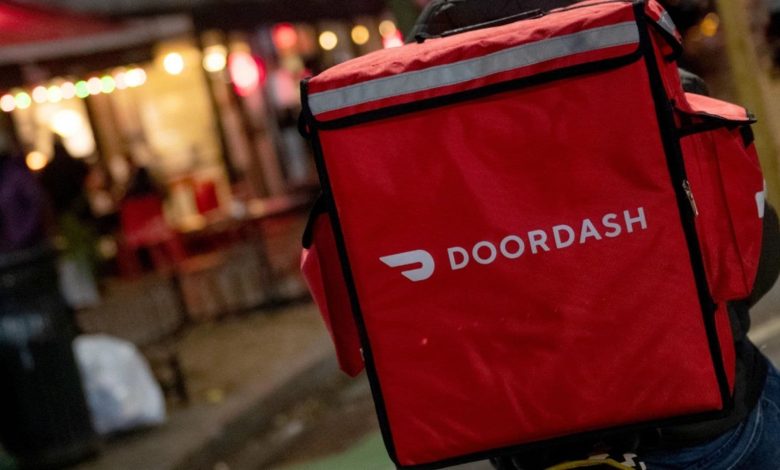
If you’ve been asking yourself how do taxes work with DoorDash, you’re in good company. As a Dasher, you’re not a traditional employee—you’re considered an independent contractor, which means taxes don’t get taken out of your weekly earnings. That’s right, no taxes withheld. It’s up to you to understand how income taxes, self-employment taxes, deductions, and 1099 forms apply to your DoorDash income. Whether you’re delivering full-time, side-hustling a few nights a week, or trying to figure out if your gas receipts count as write-offs, knowing how to manage your taxes as a DoorDash driver can save you a lot of money—and stress. In this article, we’ll walk you through the full picture of DoorDash taxes: what you owe, how to file, what to write off, and how to keep more of your hard-earned money in your pocket.
Why Dashers Pay Their Own Taxes?
Unlike W-2 employees, DoorDash Dashers operate as freelancers or gig workers. That means:
- DoorDash doesn’t withhold federal income tax
- You’re responsible for self-employment taxes (Social Security + Medicare = 15.3%)
- You’ll likely receive a 1099-NEC form if you earn $600 or more during the year
If you earn less than $600, DoorDash may not send you a form—but you’re still legally required to report that income.
What Tax Forms Should You Expect from DoorDash?
Here’s what you might get from DoorDash (and what it means):
- 1099-NEC: If you made $600+ from DoorDash in a calendar year, this form reports your non-employee compensation.
- No Form? No Problem: Even if you didn’t hit $600 and don’t get a form, you still have to report what you made on your taxes.
- Tax Summary: DoorDash offers an annual earnings summary through the app, which helps with your own reporting.

How Much Should You Set Aside for Taxes?
A good rule of thumb? Set aside 20–30% of your DoorDash income for taxes. Why so much?
- 15.3% goes to self-employment tax
- 10–12% or more might go to federal income tax, depending on your total income bracket
- You may also owe state income tax, depending on where you live
Use apps like QuickBooks Self-Employed, Stride, or Everlance to estimate taxes and track expenses as you go.
Tax Deductions for DoorDash Drivers
One of the perks of being an independent contractor? You can write off business expenses.
Here are common deductions for Dashers:
| Expense Category | Examples |
|---|---|
| Mileage | Miles driven while dashing (use a log or app!) |
| Phone expenses | Portion of your cell plan used for dashing |
| Hot bags/gear | Any DoorDash-related supplies |
| Tolls & parking | As long as they’re business-related |
| Car maintenance | Oil changes, tires, etc. (partial) |
| Health insurance | If self-employed, could be deductible |
💡 Mileage is the big one—in 2024, you can deduct 67 cents per business mile (check the latest IRS rate).
How to File Your DoorDash Taxes?
Filing taxes as a Dasher isn’t as scary as it sounds. Here’s the simplified step-by-step:
- Gather income info: Use your 1099-NEC or total earnings from the DoorDash app.
- Track expenses: Mileage, car costs, cell phone use, gear—get organized.
- File a Schedule C: This form reports your self-employed income and deductions.
- Add Schedule SE: To calculate and pay your self-employment tax.
- Use tax software or hire a pro: TurboTax, H&R Block, or a local accountant with gig economy experience.

Should You Pay Quarterly Taxes?
Yes—if you expect to owe more than $1,000 in taxes for the year. You’ll need to make estimated tax payments to the IRS every quarter:
| Quarter | Deadline |
|---|---|
| Q1 | April 15 |
| Q2 | June 15 |
| Q3 | September 15 |
| Q4 | January 15 (next year) |
Missing quarterly payments? You could face penalties from the IRS. Plan ahead!
Smart Tips to Stay on Top of DoorDash Taxes
- Track your miles religiously: Apps like Stride or Everlance make it painless.
- Separate business and personal expenses: Consider a dedicated bank account.
- Save for taxes weekly: Put aside money after each payout.
- Keep digital receipts: Gas, maintenance, gear—take photos and file them digitally.
- Don’t wait until April: Filing is easier when you’ve been organized all year.
What Happens If You Don’t File DoorDash Income?
Short answer: Don’t do it. Not reporting your DoorDash income can result in:
- IRS penalties and interest
- A surprise tax bill down the road
- Legal trouble if it’s deemed willful
Even if you think “It’s just a few hundred bucks,” the IRS takes all income seriously—especially with 1099s on record.
❓ FAQs
Q: Does DoorDash take out taxes?
A: No. You’re an independent contractor, so you’re responsible for setting aside and paying your own taxes.
Q: What tax form does DoorDash send?
A: DoorDash typically sends a 1099-NEC if you made $600 or more during the year.